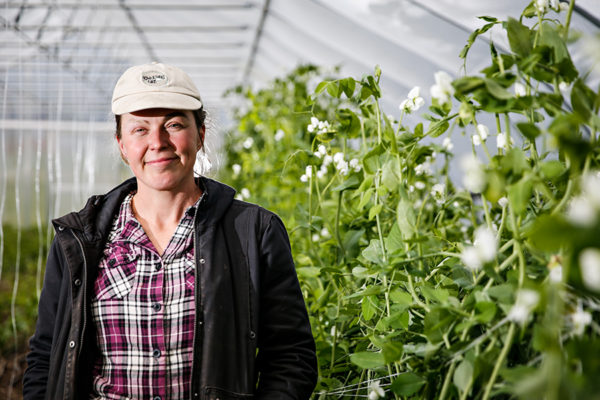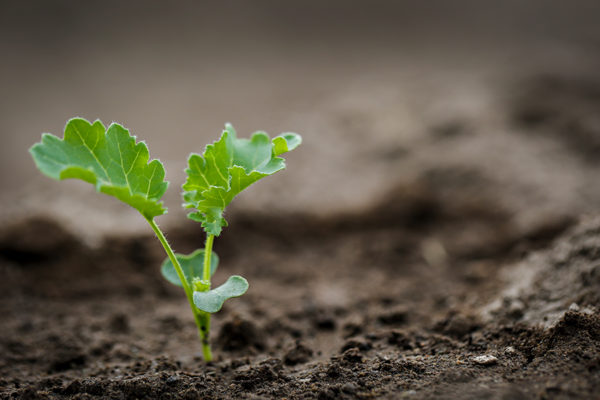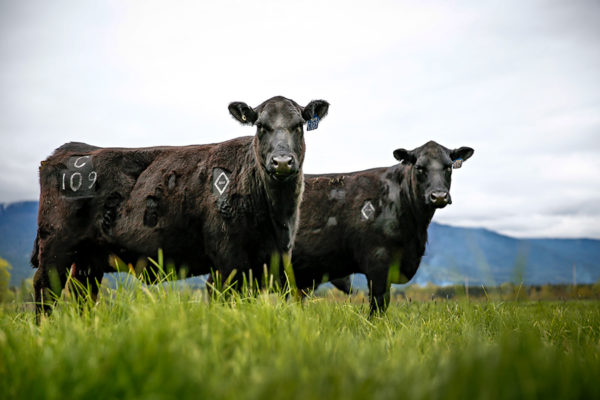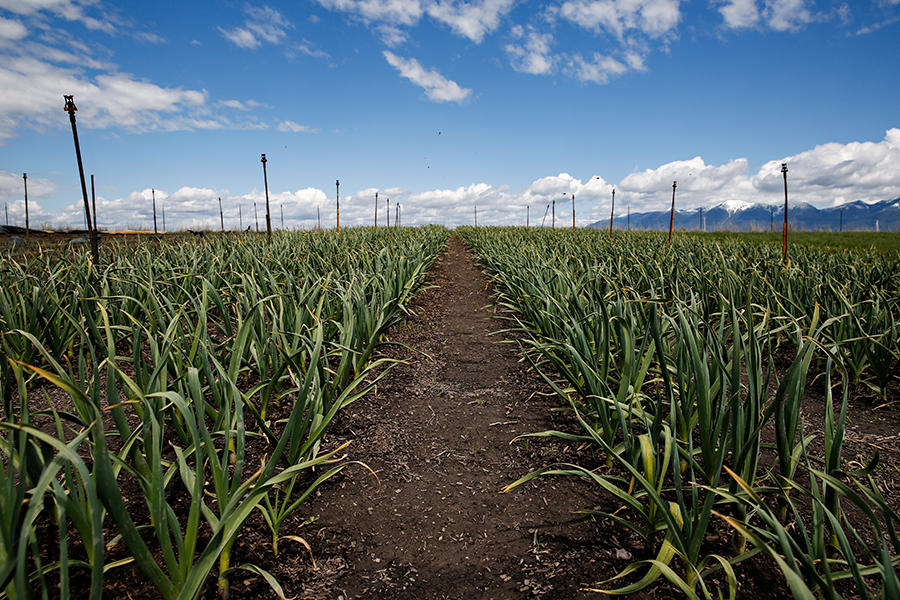Just south of Kalispell on Lower Valley Farm beneath the snowy peaks of the Swan Mountain Range, Mandy Gerth finds herself spending a lot of time in front of a computer rather than out in the field with the rest of her staff, who are working hard cultivating certified organic vegetables in Montana’s short growing season.
Gerth typically sells the majority of the vegetables from her 4-acre farm at farmers markets while selling most of the rest directly to consumers through Community Supported Agriculture (CSA) sales and about 10% going to restaurants during a normal season.
But amid a global pandemic, her usual business model has been disrupted with social distancing and fewer farmers market attendees. She’s also had to change her CSA pickup system to accommodate social distancing by setting up five pickup locations.
Gerth and Lower Valley’s manager, Kari Hammer, have also built an online store to accommodate buyers who don’t attend farmers markets and to set up more organized CSA pickups, which is taking up most of their time these days.
Amid the shifting business strategies, Gerth has noticed a heightened consumer interest in buying food locally.
“It’s really cool right now that there is some more interest in local food,” Gerth said. “This is how it always should be. It should always be that our CSA cards are sold out, and I’m so happy there’s a piqued interest in thinking about where our food comes from.”

Montana Department of Agriculture Executive Director Ben Thomas has also noticed a statewide trend in direct producer-to-consumer purchases, which he says is probably caused by a disruption in the food supply chain since the pandemic began.
“Basically what’s happened is we’ve developed this complex national and global food supply chain and distribution system,” Thomas said. “The problem with that is we’ve finally discovered some fractures in that system. Because it is so complex, it doesn’t respond very well, for example, to global pandemics.”
While the United States hasn’t necessarily faced food shortages, consumers’ eating habits have changed with fewer restaurants and disruptions in the meat packaging industry, leading to limited options at the grocery store and more direct producer-to-consumer sales, Thomas said.
Last year, Lower Valley Farm had about 150 CSA members, which has grown to 200 this season.
At Two Bear Farm, a 13-acre farm near Whitefish, operator Todd Ulizio says they’ve also seen a significant increase in CSA sales, growing from 250 last season to 342 this year.
From a production standpoint, Ulizio says nothing has changed and demand has remained the same, if dispersed differently, but sales and distribution have been redirected through their new online market.
At Lower Valley Farm, Gerth says her net profit has generally been the same as previous years since she had already planned for the season prior to the pandemic, but she now has extra costs to factor into her business model.
In order to adopt the online store, which used pricey software, she applied for a Growth Through Agriculture Program, a matching mini-grant program through which she received $4,500 from the Montana Department of Agriculture.
Gerth spent much of the grant money on Lower Valley’s online store, which requires extra labor to ensure it’s operating smoothly while also providing technical support for customers.
“Kari and I are spending so many admin hours for $15 orders,” Gerth said. “It’s just not a part of the original business plan. The fact that it is weekly ordering, it’s limited by how much people eat in conjunction with pretty small orders.”
Additionally, Gerth and her staff now have more special orders, which require individual packaging and have quickly monopolized the storage space at Lower Valley, particularly refrigeration capacity.
Due to a combination of storage space, deliveries at the added pickup locations and the extra work, Gerth speculates she will have to purchase more refrigerators and potentially another delivery truck while hiring additional part-time workers.

The economic challenges the pandemic has inflicted upon local restaurants has also impacted farmers who generate revenue from restaurant sales.
Pam Gerwe, owner of Purple Frog Gardens in Whitefish, has shifted her restaurant sales, which typically account for about 20% of sales, to CSA subscriptions in response to the service industry’s limited operations.
“We haven’t had any (restaurant) sales this year, which is pretty unusual,” Gerwe said. “We saw right away that those sales are gonna change for the year and we felt more comfortable upping our CSA numbers.”
Anton Bekkerman, an associate professor of agricultural economics at Montana State University, compares the pre-pandemic food system to a “very efficient cylinder.”
“You have producers at the top, going efficiently like sand through a cylinder through the supply chain, food hubs, grain elevators, meat processors (all) going down to customers,” he said. “The U.S. is one of the most cost-effective food supply chains in the world.”
But when the pandemic hit, workers in the middle of the supply chain, like those at meat-packaging facilities that became COVID-19 hotspots, became sick or lost their jobs as companies were forced to temporarily shut down.
“That created this bottleneck instead of the cylinder, and you have kind of an hour-glass shape,” Bekkerman said. “You still have the same number of producers at the very top and you still have the same number of consumers at the very bottom. But that middle part is not cylindrical and it is squeezed together.”
The pandemic has taken a toll on cattle ranchers across Montana, which Bekkerman describes as “extremely volatile.” To address that volatility and potential adverse effects, Montana’s two U.S. senators, Steve Daines and Jon Tester, have been working to secure relief and protections for agriculture producers.
With halts at meat-processing plants due to COVID-19 outbreaks, cattle are backing up at feedlots.
“We have meat-processing plants that just can’t take as many animals,” Bekkerman said. “So what happens on the consumer side is fewer animals being processed, which means less meat available and a low supply in the consumer market. Meat prices go up, and on the producer side, we have less demand for the meat-processing facilities and you have prices going down because of that middle part of the supply chain.”
But now, consumers are looking closer to home to meet their demands, which farms and ranches in the Flathead Valley are working to accommodate.

As beef prices rise for consumers and drop for ranchers, Montana Ranch in Bigfork is using the supply disruption as a new business opportunity.
“COVID is a forcing function that is forcing producers like us to look at going direct to the market,” rancher David Sabey said.
Montana Ranch is predominantly a seedstock operation, where most of the Angus cattle are sold for breeding and only 15% of calves go to auction. But Sabey and rancher David Brown have begun processing their animals in the Flathead Valley to be sold locally.
“It’s quite simple,” Brown said. “We’ve always had the product here, and what we’ve done is pass it through the traditional supply chain. We would take the young calves to market and sell them at an auction. Rather than doing that, we’ll keep the calves here, grow them and we’ll have cattle harvested locally and we’ll have the beef available for our community.”
Sabey and Brown have started working with Lower Valley Processing, a meat processor in Kalispell, and they plan to sell their beef directly to consumers for $4 per pound.
Kalispell Kreamery has also started processing its cull dairy cows locally at Vandevanter Meats Inc. in Columbia Falls because auctions are overwhelmed with animals. Owner Jared Tuck says if the demand keeps up, he will continue processing his cull cows locally.
At the state Department of Agriculture, Thomas says the landscape for producers is dynamic right now, creating opportunities.
“I think all of this has exposed some issues in our food systems and, in turn, increased demands on our local food systems,” Thomas said. “In the immediate term, it’s also an opportunity for us to rise to the occasion and bolster those local and regional food systems.”
Aside from the hurdles the pandemic has thrown at farmers and ranchers, a changing or unfruitful landscape is nothing producers have never seen before.
“The thing about agriculture, I hate to say, (but) there’s always something,” said Pat McGlynn of Montana State University Extension in Flathead County. “We get hail, too much rain, not enough rain. I think ag producers are a hardy stock. They know how to roll with the punches.”
At Lower Valley Farm, Gerth remains optimistic and says being ready for anything comes with the farming territory.
“How do you (prepare) for a pandemic? You have a community that supports resilient small business,” Gerth said. “And we are absolutely seeing that.”
